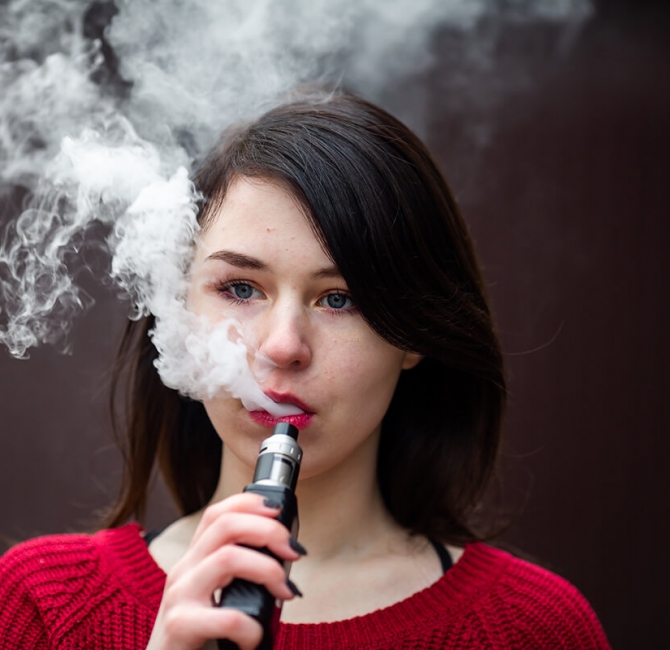In a cross-sectional study of 2,553 young adults published in JAMA Network, cannabis vaping at any level was associated with increased odds of bronchitic symptoms, and cannabis vaping three or more times in the last month was associated with increased odds of wheeze, even after simultaneously adjusting for nicotine vaping, cigarette smoking, and combustible cannabis use.
Abstract
Objective: To investigate associations of nicotine and cannabis vaping with bronchitic symptoms, wheeze, and shortness of breath.
Design, setting, and participants: Cross-sectional survey data on self-reported lifetime, 6-month, and 30-day vaping from 2,553 young adults recruited from high schools in Southern California were collected from June 2018 to October 2019. Of these participants, 94% provided data for shortness of breath and wheeze, and 86% provided data for chronic bronchitis.
Main outcomes and measures: Self-reported nicotine and cannabis vaping were measured on a Likert-type scale using the following responses: (1) never used, (2) lifetime but no past six-month use, (3) past six-month use but no use in the past 30 days, (4) use on one or two of the past 30 days, and (5) use on three or more of the past 30 days. Three respiratory health outcomes were assessed separately on the basis of self-reported symptoms: bronchitic symptoms in the previous 12 months (i.e., daily cough for three months in a row, congestion or phlegm other than with a cold, and/or bronchitis), wheeze in the previous 12 months, and shortness of breath when hurrying on level ground or walking up a slight hill.
Results: Of 2,553 participants in the analytic sample (mean [SD] age, 19.3 [0.79] years; 1477 [57.9%] female individuals), 1,095 of 2,553 young adults (42.9%) reported vaping nicotine and 939 of 2553 (38.4%) reported vaping cannabis. Compared with those who never vaped cannabis, individuals who vaped cannabis in their lifetime but not in the past 60 months (204 of 2,553 [8.4%]; adjusted odds ratio [aOR], 1.83 [95% CI, 1.08-3.10]), in the past six months but not in the last 30 days (490 of 2,443 [20.1%]; aOR, 1.58 [95% CI, 1.02-2.46]), one-two days in the past 30 days (90 of 2,443 [3.7%]; aOR, 2.83 [95% CI, 1.46-5.50]), and three or more days in the past 30 days (155 of 2,443 [6.3%]; aOR, 2.14 [95% CI, 1.16-3.92]) had significantly higher odds of chronic bronchitic symptoms after adjusting for nicotine vaping, cigarette smoking, cannabis smoking, and sociodemographic characteristics. Cannabis vaping three or more times in the last 30 days was also associated with increased odds of wheeze (aOR, 2.27 [95% CI, 1.17-4.37]). Associations of cannabis vaping with shortness of breath and nicotine vaping with any respiratory health outcome were not statistically significant in fully adjusted models.
Conclusions and relevance: Findings of this cross-sectional study suggest that cannabis vaping is associated with increased risk of bronchitic symptoms and wheeze in young adults. Further research is needed to understand the temporality of the association and the mechanisms underlying the difference between nicotine and cannabis vaping in the risk of bronchitic symptoms and wheeze.



